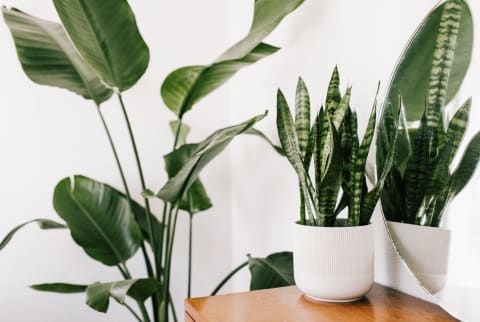Advertisement
Green Thumbs, Gather: 5 Of The Most Important Plant Lessons Of The Year


As every plant parent likely knows, some houseplants can be finicky, and different ones require different kinds of care. We've talked with a lot of plant experts this year, getting answers to questions about everything from humidity to yellowing leaves. Here are five golden takeaways we can offer to keep your plants in tiptop shape for the rest of 2020 and beyond:
Understand your plants' individual watering needs.
While some plants are considered "hard to kill" like the pothos or snake plant (seriously, you'd be amazed how long they'll last without water), others need a regimented watering schedule, sometimes on a daily basis. And then there are those plants prone to overwatering, such as succulents.
On top of watering, some plants that prefer humid environments enjoy a good misting as well. Long story short, read up on your plant species' needs. If your plant's leaves are yellowing or curling, for example, that's a sign it's not getting the right amount of water—whether that's too little or not enough.
Make sure your pots have drainage holes.
Yes, plants can "drown." And if your pot doesn't have drainage holes, it's much more likely to happen. When you water your plants, you'll want the water to completely drench the soil in order to make sure the roots get a good soak. All that water needs a place to escape; otherwise, it can pool at the bottom of your pot, leading to overwatering, root rot, and an all-around unhappy plant.
Get rid of pests—and fast.
Pests can wreak havoc on your favorite plants, so learn to spot the signs. Things like speckled or spotted leaves, as well as pale or yellowing leaves aren't good signs. Any webbing on leaves or a seemingly sticky residue is also a telltale sign.
To get rid of them, isolate the infected plant and give it a wipe-down with a damp towel. You can add a little dish soap to the water when you wipe if necessary, too. Neem oil is also a great natural insecticide; dilute 2 tablespoons in a gallon of water and spray your plant down with the mixture to give pests the boot.
Know when it's time to repot.
Just as your plant grows bigger and taller, its roots are growing beneath the surface. Eventually, it's going to need to be repotted. One of the first signs is drooping leaves, particularly when the soil is wet. Another is your plant is growing normally but has a lot of yellow leaves. And of course, one definitive sign is visibly overgrown roots that are growing through the drainage holes or have formed a thick web in the bottom of the pot. If you're noticing that, it might be time for a size upgrade!
Adjust your plant care with the seasons.
And lastly, when the seasons change, so do the conditions around our homes. Not only are our homes drier in the winter, but plants already go through seasonal growth spurts, with most growth occurring in the summer.
Come wintertime, make sure your plants are still getting adequate light, as much as possible. Be mindful of any places where the temperature fluctuates, such as near cold windows or a blasting heater. You also likely won't have to water your plants as much since your plants are naturally not apt to grow as much in the winter. Water as needed by doing a touch test to see when the soil has dried and is ready for a watering.
Plant parenting can be tricky, but with a little patience and practice, you'll figure out what each of your plants needs, so you can give them the best care, and they can keep thriving.